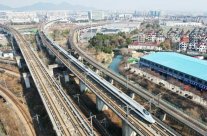
"Developed countries" usually refer to countries with high income, high education level, and high social welfare, but there is no clear definition internationally.The Cabinet Government of Japan believes that "developed countries" are member of the economic cooperation and development organization (Economic Organization), but this classification includes not only economy, but also political stability and social maturity.
With the development of the economy, the countries of Asian'an are constantly on the road experienced by developed countries, and at the same time, it is also facing new challenges such as aging population and rapid social security expenditure.These problems increase the risk of "developed countries".Diseases in developed countries mainly appear in mature capitalist countries. Due to the decline in birth rate, society has moved to aging, social security expenditure continues to swell, and the industrial vacuumization leads to an increase in unemployment rates. The economy will increase.
The Economic Organization, known as the Music Department of the developed countries, only Japan and South Korea from Asia.At present, Indonesia and Thailand are striving for joining, but in order to meet the admission standards, these countries need to completely amend domestic regulations, and it takes a long time to officially join.But before these countries entered the ranks of developed countries, "developed countries" were approaching rapidly.
The concept of "demographic dividend" in economics.The definition of the demographic dividend period is different. Usually, with the increase in the year -on -year increase in the increase in the year -on -year rate of the age of production (over 15 years old), it will promote the period of economic growth through various channels.
With the increase in the proportion of the age population, the source of funds for capital stocks (the accumulation of investment accumulated to production activities), that is, the increase in domestic savings, potential growth rates will also become higher.In addition, with the development of economic development, it will help the increase in children's raising and education burden, which will help increase the savings of the family revenue and expenditure department.If the family burden is reduced, the government will shift finance from the national life, to the construction of infrastructure.In addition, the expansion of the employment population is directly related to the increase in consumer expenditure.
The demographic dividend of Half of the Aya Annan is considered to end.The United Nations World Population Forecast (2022 Edition) shows that as a separate region, the Asian Population dividends have ended in 2023.From the perspective of various countries, led by Singapore in 2010, Thailand, Vietnam, Brunei, and Malaysia have ended.Indonesia, which has the largest population in the region, is expected to end the demographic dividend period in 2029.For example, Thailand's production age began to decrease in 2018, and economic growth slowed down.The reduction of labor force may have adverse effects on consumption and investment.
The Nobel Prize winner of Economics Paul Crugman published an article entitled an Asian miracle in 1994, pointing out that Asia's economic growth is only a factors for production, that is, the increase in capital and labor input can explain it.And sound alarm clock without technological progress or improve production efficiency, it will not continue to grow.
Cruggman's alarm clock has been in the past 30 years. According to the growth accounting analysis of the Asian Productivity Organization (APO), so far, the accumulation of "capital" the biggest contribution to Asia's metropolitan economic growth is "capital".However, Asia's capital investment relies on foreign capital to a fairly extent.Recently, the increase in geopolitical risks has pose a threat to the stability of regional economic economic stability, and requires more independent economic operations.On the other hand, in terms of labor investment, Singapore and Thailand's phenomenon of declining production age population in 2018 has become a factor in economic growth in recent years.
In order to cope with these challenges,In order to cope with these challenges, it is also imperative to increase the investment in capital and labor and increase the full factor productivity (TFP).In particular, it is necessary to improve TFP through technological innovation, efficient resource allocation, and education and training to improve labor quality.Especially to improve productivity by introducing digital technology and artificial intelligence, it is the key to the Asianan country towards the next stage of growth.Government should improve production efficiency by increasing investment and technological innovation investment to promote the introduction of digital technology and artificial intelligence.
In the above -mentioned APO growth accounting analysis, China's TFP has the role of economic growth, second only to capital accumulation.But in Asia, the contribution of TFP is limited.If it is not improved, economic growth will naturally lose.
The Ayanian country must implement strategic reforms in a timely manner to avoid the serious consequences of "diseased countries' diseases".If decisive action is not taken as soon as possible, these countries will be crushed by these problems before entering the ranks of developed countries.
The incomplete social security system is the root cause of the poverty of the elderly.If this situation is to avoid improving the social security system, it will fall into a dilemma and cannot fully invest in public undertakings and industrial policies that help economic growth.
In addition, the long -term economic growth will lead to a reduction in domestic and foreign investment, hindering the development of new industries and technology, and the economy itself may sink further.
In summary, before Asia, Asian'an's transformation to the TFP -dominated economic transformation was imminent.
The author is a professor at the Ministry of Political Science and Economics and Economics of the Guoshi Museum of Japan, a visiting professor at Thai and Japan University of Technology




